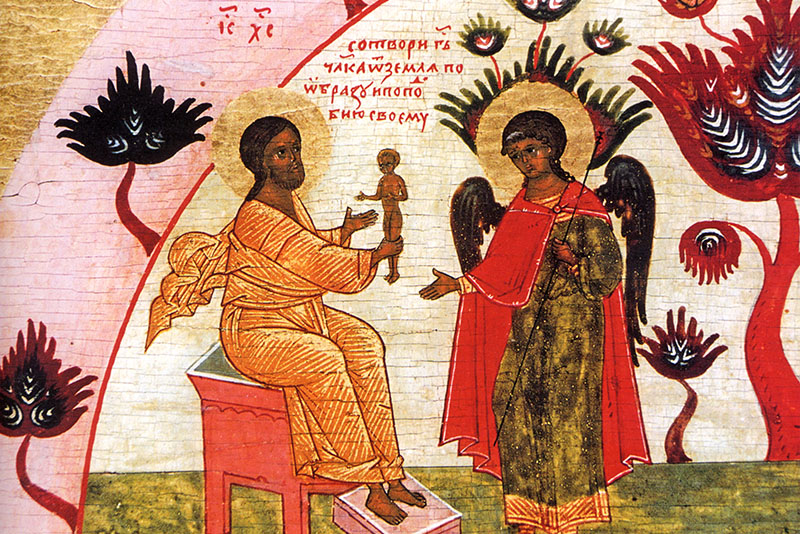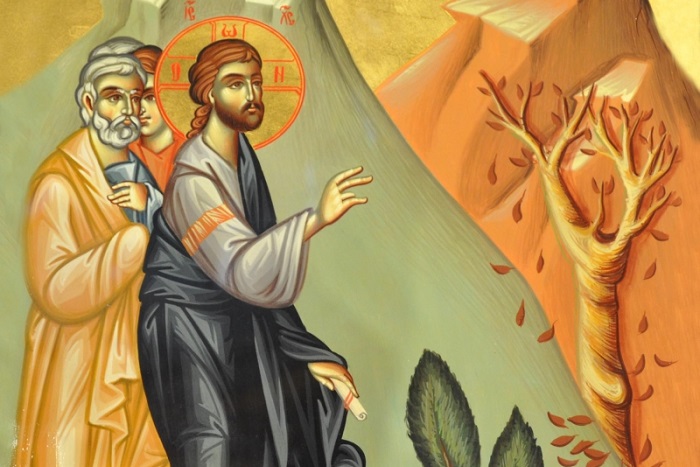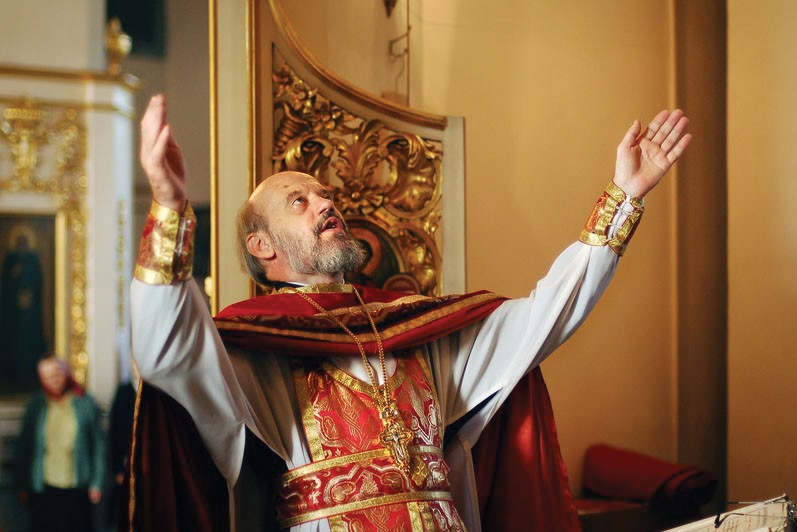
A special commemoration of the departed takes place during Great Lent. In two thousand years, the Church has created memorial services with a deep meaning and brilliant hymns. They contain an array of experiences, combining grief and despair, mourning for the deceased and fear of the afterlife with joy about the destruction of death by the Risen Christ. These two different prayer motifs are intricately intertwined in our church services. Where do they come from? What does the Bible say about death, and where do we learn that?
Paschal Attitude towards Death
Christian attitude towards death was originally attributed solely to Resurrection. Christians were keenly aware of the destruction of death by the Messiah. “O death, where is thy sting? O grave, where is thy victory?” (1 Cor. 15:55). Death was no longer perceived as alienation from God. “It is not the dead who praise the LORD, those who go down to the place of silence.” (Psalm 113: 25). The Death and Resurrection of Jesus Christ abolished the dark depths of Sheol, where even the righteous had descended. Christians no longer died the death that previously separated people from God. Naturally, all people, including Christians, are still biologically mortal and still bury their dead, but the life of all the faithful, whether living or dead, is now “hidden with Christ in God” (Col. 3: 3). We are united with Christ in the Sacrament of Baptism , and the fact that Christ is risen from the dead and “death no longer has dominion over Him” (Rom. 6: 9), means that it does not have spiritual power over us either. This attitude towards death is beautifully expressed in the epitaphs on early Christian graves, such as the inscription “She is alive…” found at an early Christian cemetery. It also gave rise to many chants still fuelling our funeral services.
Paschal Elements
One of such early Christian elements is the ancient prayer “God of spirits and all flesh.” At some point it played a key role in the funeral service and was read by the bishop at its end (see Small Euchologion). From the very beginning, the entire prayer is permeated with the Paschal tonality – “You have trampled down death, made the devil powerless…” – and ends with the same Paschal doxology: “For you are the resurrection, the life and the repose of your servant…” It is noteworthy that the memorial service consists uniquely of hymns and psalm singing, among which there are no prayers, except for the “God of spirits”, which makes it truly unique. In the modern funeral service, this prayer is pronounced about 8 (!) times, albeit in a shortened form of a doxology.
Another element containing that “layer” of the early Christian attitude towards death is the kontakion “With the Saints give rest…” The kontakion itself is not an early work, but it contains the early Christian idea of the repose “with the saints”. A saint in the language of the early church is any member of the community, which makes resting with the saints simply being with all the departed members of the Church. The idea of individual afterlife is not yet observed here, but salvation is understood collectively, as being in the host of the departed saints, inseparable from Christ. The Paschal pinnacle of the funeral service is, without a doubt, contained the joyful confidence of St Paul the Apostle about the general resurrection of the dead, and the living “caught up together with them in the clouds to meet the Lord in the air” (see 1 Th 4: 13-17), as well as the words of Jesus Himself that “he who hears My word, and believes Him who sent Me, has eternal life, and does not come into judgment, but has passed out of death into life.”(John 5:24).
Mournful Hymnography
There is another layer of the funeral chants, whose tonality is far from Paschal. How has it become part of the service? The answer lies in the fact that this layer reflects a different side of Christian attitude towards death, which became more articulate when a huge mass of newly converted Christians joined the church communities with the adoption of Christianity by Emperor Constantine in 313. The joyous theology of the victory over death has not gone anywhere, but its direct connection with personal spiritual life of most Christians was altered. Hymnographic works gradually began to appear with emphasis on the mourning for the departed and fear of the inevitable death.
For a long time monastic communities did not welcome the spread of hymnography in worship, preferring the biblical poetry of the psalms. However, over time, the tradition of mourning for sins and death penetrated into the monastic environment, which was especially emphasized during the period of Great Lent as a contrast to Easter.
Monastics became the authors of numerous funeral chants, saturated with fear of death and the afterlife. We see many such chants in today’s funeral service. Suffice it to recall the ikos “I mourn and I lament when I contemplate death, and I see our beauty that was made in the image of God, lying in the graves, disfigured, without glory and without form” or: “Come, descendants of Adam, Let us look upon him laid low in the earth, Made after our own image, All comeliness stripped away, Consumed by worms in darkness And concealed by the earth. ” (farewell stichera). The purpose of these hymns is not to intimidate believers, but rather to call them to sobriety and repentance.
As we can see, the relations between the two layers contained in our memorial services range from contradiction to complementation. It is worth remembering that both layers are completely justified, human nature is multifaceted and assumes various thoughts about death. Both ‘strata’ are essential for a holistic perception of the Christian perspective on death — the early Christian Paschal experience and the Old Testament “Remember your last day and you will never sin” (Sir 7:39).




